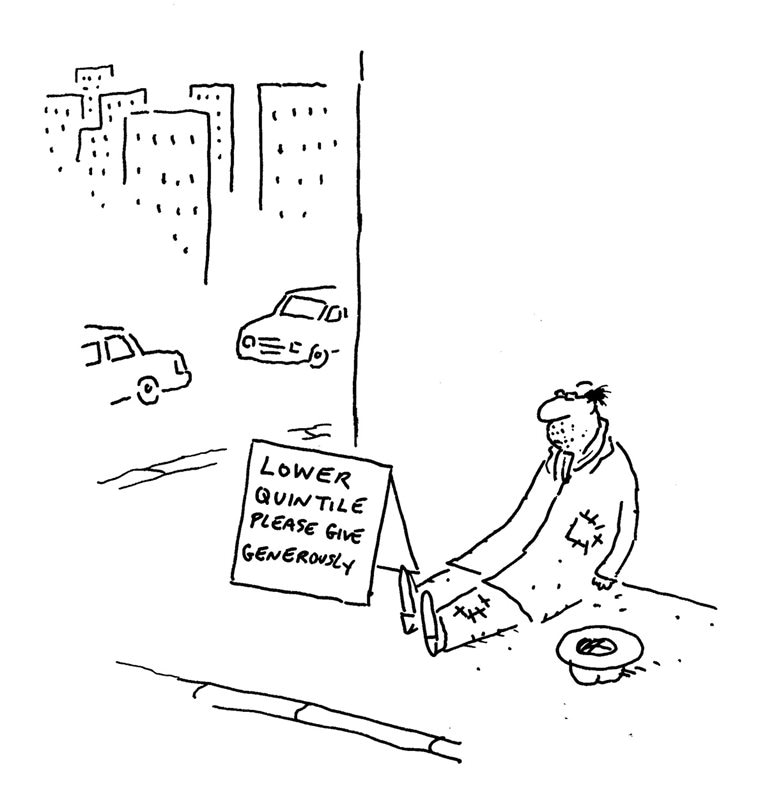Is your strategy good enough to move you up on the power curve?
In the early 15th century, European map makers drew their own continent reasonably accurately. But they outlined Africa and Asia just as confidently, despite little knowledge of those unexplored coasts, and missed the Western Hemisphere entirely.

It was only after Christopher Columbus encountered an unknown continent that cartographers realized just how much they didn’t know, and began leaving blank spaces for explorers to fill in.
The current state of strategy at times reminds us of those early maps. Discussion in the strategy room tends to focus on how we compare with last year and our immediate competitors, and our expectations for the next year, but there is little exploration of the world beyond our own experience—the broader corporate universe outside our familiar sphere of activity. The strategy room is jammed so full with slides and facts from this “inside view” that there is little space for an external, empirical perspective.
My colleagues and I set out to flesh out our clients’ maps by bringing in an “outside view.” To prepare our new book, Strategy Beyond the Hockey Stick, we examined publicly available information on dozens of variables for the world’s 2,393 largest companies. We found 10 levers that explain more than 80% of the up-drift and down-drift in corporate performance—data that can help you assess your strategy’s odds of success before you leave the strategy room, much less start to execute the plan.
If Jeff Bezos walks into a bar, the average wealth of all others in the room would soar to more than $100 million, even though their wallets remain just as slim
At its heart, business strategy is about beating the market—in other words, defying the power of “perfect” markets to push economic surplus back to zero. Economic profit (the total profit after the cost of capital is subtracted) measures the success of that defiance by showing what is left on the table after the forces of competition have played out. Our study found that from 2010 to 2014, the average company made $180 million a year in economic profit. Plotting those averages demonstrates a power law—the tails of the curve rise and fall at exponential rates, with long flatlands in the middle:

You see a big gap between the middle and the top—the average economic profit on the top quintile is 30 times greater! While we expected a broad distribution of results, the steepness of the tails surprised us, as did how flat the broad middle was. Going back to my maps analogy, we thought we were headed for Japan and hit the West Indies instead. Among other things, we realized that the extremes of the results render an average all but meaningless. If Jeff Bezos walks into an ordinary bar, the average wealth of the other people in the room would soar to more than $100 million, even though all the other customers’ wallets remain just as slim as before.
There are several important takeaways from what we’ve called the Power Curve:
Market forces are pretty efficient. The average company generates returns that exceed the cost of capital by almost 2 percentage points, but the market is chipping away at those profits all the time. That brutal competition is why you must struggle just to stay in place. For companies in the middle of the Power Curve, the market takes a heavy toll. In those flat lands, all the hard work amounts to little more than the ability to pay the rent. Companies in those three quintiles delivered economic profits averaging just $47 million a year.
The curve is extremely steep at the bookends. Companies in the top quintile capture nearly 90% of the economic profit created, averaging $1.4 billion annually. This is a hall of fame for business, with the top 40 including household names such as Microsoft, China Mobile, Merck and Exxon. In fact, those in the top quintile average some 30 times as much economic profit as those in the middle three quintiles, while the bottom 20% suffer deep economic losses. In smartphones, for example, the top two companies—Apple and Samsung in the period we studied—earned virtually all the economic profit while the other mobile phone makers in aggregate actually destroyed value. At the other end of the curve, the undersea canyon of losses is deep—though not quite as deep as the mountain is high.

Size isn’t everything, but it isn’t nothing, either. Economic profit reflects the strength of a strategy based not only on the power of its economic formula but also on how scalable that formula is. Compare Wal-Mart, with a moderate 12% return on capital but a whopping $136 billion of invested capital, with Starbucks, which has a huge 50% return on capital but is limited by being in a much less scalable category, deploying only $2.6 billion of invested capital. They both generated enormous value, but the difference in economic profit is substantial: $5.3 billion for Wal-Mart versus $1.1 billion for Starbucks.
Industry matters, a lot. Our analysis shows that about 50% of your positioning on the Power Curve is driven by your industry—highlighting just how critical the “where to play” choice is in strategy. Industry performance also follows a Power Curve, with the same hanging tail and high leading peak:

There are 12 tobacco companies in our research, and nine are in the top quintile. Yet there are 20 paper companies, and none is in the top quintile. The role of industry in a company’s position on the Power Curve is so substantial that you’d rather be an average company in a great industry than a great company in an average industry. In some cases, you’d rather be in your supplier’s industry than in your own. For example, the average economic profit of airlines is a loss of $99 million, while suppliers in the aerospace and defense category average a profit of $453 million.
Mobility is elusive. We found that the odds of a company moving from the middle quintiles of the Power Curve to the top quintile over a 10-year period are 8%. Consider that number for a moment: it means fewer than 1 in 10 companies make such a leap. To give yourself the best chance, you must choose the right businesses in your portfolio to back. Their chances of showing real improvement are also 1 in 10.
A fresh perspective with the outside view
When you realize that success is largely defined by your company’s and your industry’s movements on the Power Curve, your perspective changes. Your horizon gets broadened. You’re looking at a new map, a new reference point where you’re no longer comparing yourself with last year or your closest rival, but the full universe of companies competing for capital and economic profits.
Success for your strategy becomes moving up on the Power Curve, and your main competitor is the Darwinist force of the market that squeezes your profitability. In the end, it’s you versus the world.
Martin Hirt is a senior partner in our Hong Kong office and co-author of Strategy Beyond the Hockey Stick with Sven Smit and Chris Bradley.